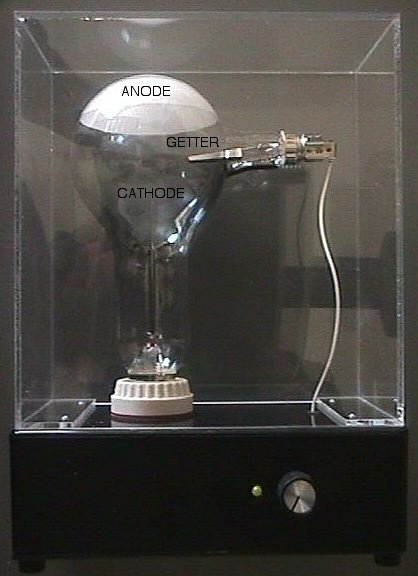Field Emission Electron Microscope (FEEM).
P.I.R.A. #: 7A60.05
Illustrates: Field Emission Microscope, Quantum Mechanics, Quantum Mechanical Tunneling, Tunneling .
Description: The Field Emission Electron Microscope (FEEM) demonstrates quantum mechanical tunneling of electrons. The microscope was invented by Erwin Muller in 1936 [E. W. Muller. Z. Phys. 102, 734 (1936)]. The magnification of a typical FEEM is approximately 500,000X. Its resolution is about 20 Angstroms.
Size: 20" h x 40" w
Notes: A FEEM tube consists of a cathode, in the form a sharply pointed metal wire placed several centimeters in front of a transparent anode that has been coated with a phosphor (Willemite). A barium "getter" keeps the pressure in the FEEM tube below 1E-15 Pascal. As a high voltage is applied between the cathode and the anode a very high electric field is created at the cathode surface. When the field reaches a few volts per nanometer the width of the energy barrier for electrons in the metal approaches their de Broglie wavelength and tunneling through the barrier becomes possible. Tunneling electrons emerge from the barrier as free particles and accelerate to the anode where the phosphor coating fluoresces and makes each electron impact visible. The image that appears on the phosphor reflects the variation in the work function of the cathode surface.
Hazard: Glass.
Condition: Fair.
